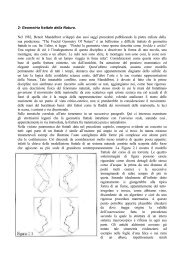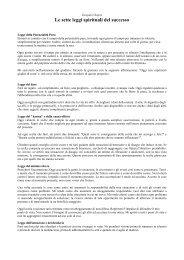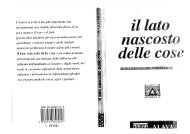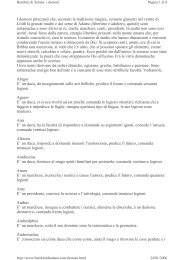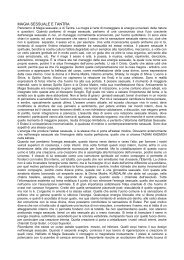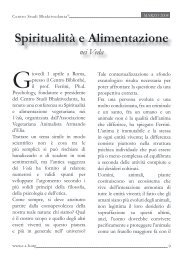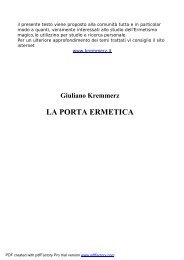120 ~ TALIBANestimated that 96 per cent of Afghan heroin came from areas under Talibancontrol.The Taliban had done more than just expand the area available foropium production. Their conquests had also expanded trade and transportroutes significantly. Several times a month heavily armed convoys inToyota landcruisers left Helmand province, where 50 per cent of Afghanopium is grown, for a long, dusty journey. Some convoys travelled southacross the deserts of Baluchistan to ports on Pakistan's Makran coast,others entered western Iran, skirted Tehran and travelled on to easternTurkey. Other convoys went north-west to Herat and Turkmenistan. By1997 dealers began flying out opium on cargo planes from Kandahar andJalalabad to Gulf ports such as Abu Dhabi and Sharjah.Central Asia was the hardest hit by the explosion in Afghan heroin.The Russian mafia, with ties to Afghanistan established during the Sovietoccupation, used their networks to move heroin through Central Asia,Russia, the Baltics and into Europe. Tajikistan and Kyrgyzstan developedimportant opium routes and became significant opiate producers themselves.Whereas previously Afghan opium would be refined in laboratoriesin Pakistan, a crackdown in Pakistan and the new diversification in routesencouraged dealers to set up their own laboratories inside Afghanistan.Acetic anhydride, a chemical necessary to convert opium into heroin wassmuggled into Afghanistan via Central Asia.The explosion in heroin production began ironically not in Afghanistanbut in Pakistan. Pakistan had become a major opium producer duringthe 1980s producing around 800 metric tonnes a year or 70 per cent ofthe world's supply of heroin until 1989. An immense narcotics trade haddeveloped under the legitimizing umbrella of the CIA-ISI covert supplyline to the Afghan Mujaheddin. 'During the 1980s corruption, covertoperations and narcotics became intertwined in a manner which makesit difficult to separate Pakistan's narcotics traffic from more complex questionsof regional security and insurgent warfare,' said a landmark 1992study on the failure of US narcotics policy. 4 As in Vietnam where theCIA chose to ignore the trade in drugs by anti-communist guerrillaswhom the CIA was financing, so in Afghanistan the US chose to ignorethe growing collusion between the Mujaheddin, Pakistani drugs traffickersand elements in the military.Instances of this collusion that did come to light in the 1980s wereonly the tip of the iceberg. In 1983 the ISI Chief, General Akhtar AbdurRehman had to remove the entire ISI staff in Quetta, because of theirinvolvement with the drugs trade and sale of CIA supplied weapons thatwere meant for the Mujaheddin. 5 In 1986, Major Zahooruddin Afridi wascaught while driving to Karachi from Peshawar with 220 kilograms ofhigh-grade heroin - the largest drugs interception in Pakistan's history.HIGH ON HEROIN: DRUGS AND THE TALIBAN ECONOMY — 121Two months later an airforce officer Flight Lieutenant Khalilur Rehmanwas caught on the same route with another 220 kilograms of heroin. Hecalmly confessed that it was his fifth mission. The US street value of justthese two caches was US$600 million dollars, equivalent to the totalamount of US aid to Pakistan that year. Both officers were held in Karachiuntil they mysteriously escaped from jail. 'The Afridi-Rehman cases pointedto a heroin syndicate within the army and the ISI linked to Afghanistan,'wrote Lawrence Lifschultz. 6The US Drugs Enforcement Administration (DEA) had 17 full-timeofficers in Pakistan during the 1980s, who identified 40 major heroin syndicates,including some headed by top government officials. Not a singlesyndicate was broken up during that decade. There was clearly a conflictof interest between the CIA which wanted no embarrassing disclosuresabout drug links between the 'heroic' Mujaheddin and Pakistani officialsand traffickers and the DEA. Several DEA officials asked to be relocatedand at least one resigned, because the CIA refused to allow them to carryout their duties.During the jihad both the Mujaheddin and officers in the communistarmy in Kabul seized the opportunity. The logistics of their operationswere remarkably simple. The donkey, camel and truck convoys whichcarried weapons into Afghanistan were coming back empty. Now theycarried out raw opium. The CIA-ISI bribes that were paid off to thePashtun chiefs to allow weapons convoys through their tribal areas, sooninvolved the same tribal chiefs allowing heroin runs along the same routesback to Pakistan. The National Logistics Cell, an army-run trucking companywhich transported CIA weapons from Karachi port to Peshawar andQuetta, was frequently used by well-connected dealers to transport heroinback to Karachi for export. The heroin pipeline in the 1980s could nothave operated without the knowledge, if not connivance, of officials atthe highest level of the army, the government and the CIA. Everyonechose to ignore it for the larger task was to defeat the Soviet Union.Drugs control was on nobody's agenda.It was not until 1992, when General Asif Nawaz became Pakistan'sarmy chief, that the military began a concerted effort to root out thenarcotics mafia that had developed in the Pakistani armed forces. Nevertheless,heroin money had now penetrated Pakistan's economy, politicsand society. Western anti-narcotics agencies in Islamabad kept track ofdrugs lords, who became Members of the National Assembly during thefirst governments of Prime Minister Benazir Bhutto (1988-90) and NawazSharif (1990-93). Drugs lords funded candidates to high office in bothBhutto's Pakistan People's Party and Sharif's Pakistan Muslim League.Industry and trade became increasingly financed by laundered drugsmoney and the black economy, which accounted for between 30 and 50
122 TALIBANper cent of the total Pakistan economy, was heavily subsidised by drugsmoney.It was only after the Soviet withdrawal from Afghanistan that US andWestern pressure began to mount on Islamabad to curtail the productionof opium in Pakistan. Over the following decade (1989-99) someUS$100 million dollars of Western aid to combat narcotics was madeavailable to Pakistan. Poppy cultivation was drastically reduced from ahigh of 800 tons to 24 tons in 1997 and two tons by 1999. Crop substitutionprojects in the NWFP proved to be extremely successful. Neverthelessthe dealers and the transport mafia never went away and they receiveda major boost with the arrival of the Taliban and the subsequent increasein Afghan heroin production. Pakistan was no longer a heroin producer,but it became a major transport route for Taliban heroin exports. Thesame dealers, truck drivers, madrassa and government contacts and thearms, fuel and food supply chain that provided the Taliban with its suppliesalso funnelled drugs - just as the arms pipeline for the Mujaheddinhad done in the 1980s.Pakistan was slipping back into bad habits. In February 1998 the Clintonadministration accused Islamabad of doing little to curb productionand exports of heroin. The US refused to certify that Pakistan was curbingnarcotics production, but gave a waiver on the grounds of US nationalsecurity interests. 7 But the drugs problem was now no longer confined toPakistan and Afghanistan. As export routes multiplied in all directions,there was a dramatic increase in drug consumption across the region. By1998, 58 per cent of opiates was consumed within the region itself andonly 42 per cent was actually being exported. 8 Pakistan, which had noheroin addicts in 1979, had 650,000 addicts in 1986, three million by1992 and an estimated five million by 1999. Heroin addiction and drugsmoney fuelled law and order problems, unemployment and allowed ethnicand sectarian extremist groups to arm themselves.In Iran, the government admitted to having 1.2 million addicts in 1998,but senior officials in Tehran told me the figure was nearer three million -even though Iran had one of the toughest anti-narcotics policies in theworld, where anyone caught with a few ounces of heroin faced the deathpenalty automatically. 9 And Iran had tried much harder than Pakistan tokeep the drugs menace away. Since the 1980s Iran had lost 2,500 menfrom its security forces in military operations to stop convoys carryingdrugs from Afghanistan. After Iran closed its borders with Afghanistanduring the tensions with the Taliban in September 1998, Iranian securityforces caught five tons of heroin on the border in a few weeks. The Talibanfaced a major financial crisis as the closed border led to a drop inheroin exports and tax revenue.Heroin addiction was also increasing in Uzbekistan, Tajikistan, Turk- IHIGH ON HEROIN: DRUGS AND THE TALIBAN ECONOMY 123menistan and Kyrgyzstan as they became part of the heroin export chain.In 1998 guards on the Tajikistan-Afghanistan border confiscated one tonof opium and 200 kilograms of heroin. In January 1999, Tajikistan's PresidentImomali Rakhmanov told an international conference that drugswere being smuggled into his country from Afghanistan at the rate of oneton a day and addiction was increasing. Uzbekistan said there was an 11per cent increase of drugs from Afghanistan during 1998.I saw heroin being openly sold outside five-star hotels in Ashkhabad,the capital of Turkmenistan, and inside the hotels flashy Turkmen andRussian mafioso with their even flashier girlfriends, spoke of their trips tothe Afghan border 'to do business'. In 1997 two tons of heroin and 38tons of hashish were seized by the authorities. By 1999, Turkmenistan,with its conciliatory policy with the Taliban had become the principleroute of export for Afghan heroin with corrupt Turkmen officials benefitingfrom the trade. 10 President Askar Akayev of Kyrgyzstan told me inJanuary 1999, that his country was now 'a major route for drugs traffickingand it is responsible for the growth of crime'. Akayev said the war againstdrugs could not be won until there was peace in Afghanistan and thecivil war had become the most destabilizing factor in the region. 11The heroin explosion emanating from Afghanistan is now affecting thepolitics and economics of the entire region. It is crippling societies, distortingthe economies of already fragile states and creating a new narcoelitewhich is at odds with the ever increasing poverty of the population.'Drugs is determining the politics of this region as never before,' said aWestern ambassador in Islamabad. 'We equate it now with other seriousthreats such as Islamic fundamentalism, terrorism and potential economiccollapse in some of these countries,' he added. 12This worsening situation prompted attempts by the international communityto talk to the Taliban. After six months of secret negotiationsUNDCP concluded an agreement with the Taliban in October 1997. TheTaliban agreed to eradicate poppy growing if the international communityprovided funds to help farmers with substitute crops. Pino Arlacchi, thehead of UNDCP asked for US$25 million from donors for a ten-yearprogramme to eliminate poppy fanning in areas controlled by the Taliban.'Afghan heroin supplies 80 per cent of Europe's supply of heroin and 50per cent of the world's supply of heroin. We are talking about eliminatinghalf the heroin of the world,' Arlacchi said enthusiastically. 13 UNDCPsaid it would introduce new cash crops, improve irrigation, build newfactories and pay for law enforcement.But the agreement was never implemented by the Taliban and afterthe pull-out of UN agencies from Afghanistan in 1998, it simply fellapart. Six months later Arlacchi was less optimistic when he told me,'Afghanistan is one of the most difficult and crucial parts of the world but
- Page 1 and 2:
YALE NOTA BENE"The broader storyher
- Page 3 and 4:
TalibanMilitant Islam,Oil and Funda
- Page 5 and 6:
Vi ~ CONTENTSChapter 8A Vanished Ge
- Page 7 and 8:
AFGHANISTAN•^ UZBEKISTAN J TAJIKI
- Page 9 and 10:
2 ~ TALIBANaccounts for some 40 per
- Page 11 and 12:
"6 ~ TALIBANgas riches of landlocke
- Page 13 and 14:
10 ~ TALIBANgious mix that was to m
- Page 15 and 16:
Part 1History of theTaliban Movemen
- Page 17 and 18: 18 ~ ISLAM OIL AND THE NEW GREAT GA
- Page 19 and 20: 22 ~ ISLAM OIL AND THE NEW GREAT GA
- Page 21 and 22: 26 ~ ISLAM OIL AND THE NEW GREAT GA
- Page 23 and 24: 30 ~ ISLAM OIL AND THE NEW GREAT GA
- Page 25 and 26: 34 TALIBANKabul- Hikmetyar had alli
- Page 27 and 28: 38 ~ TALIBANrHERAT 1995: GOD'S INVI
- Page 29 and 30: 42 ~ TALIBANdo manage to take Kabul
- Page 31 and 32: J46 ~ TALIBANgreater weight to UN e
- Page 33 and 34: 50 ~ TALIBANas they hung from steel
- Page 35 and 36: 54 ~ TALIBANthey would help rearm t
- Page 37 and 38: 58 TALIBANGul Mohammed Pahlawan, Gh
- Page 39 and 40: 62 TALIBAN2,500 Taliban, who had re
- Page 41 and 42: 66 TALIBANshould throw all aid agen
- Page 43 and 44: 70 ~ TALIBANyears of battle and hel
- Page 45 and 46: 74 ~ TALIBANThousands of Hazaras we
- Page 47 and 48: 78 TALIBANhas become a plague,' sai
- Page 49 and 50: NEW STYLE FUNDAMENTALISM OF THE TAL
- Page 51 and 52: 86 TALIBANsity students - Hikmetyar
- Page 53 and 54: 90 TALIBANSharia was heavily influe
- Page 55 and 56: 94 TALIBANinflamed the debate in th
- Page 57 and 58: 98 TALIBANizing factor of Islam, it
- Page 59 and 60: 102 TALIBANadministrations made the
- Page 61 and 62: 106 ~ TAUBANfrom working, but it no
- Page 63 and 64: TALIBANUniversity, she held down a
- Page 65 and 66: 114 TALIBAN A VANISHED GENDER 115Ta
- Page 67: 118 TALIBANUS$1,300 - a small fortu
- Page 71 and 72: 126 TALIBANequipment, no electricit
- Page 73 and 74: 130 ~ TALIBANfight with the Mujahed
- Page 75 and 76: 134TALIBANAugust 1996 noted that Bi
- Page 77 and 78: 138 ~ TALIBANwho were using the Kho
- Page 79 and 80: 11DICTATORS AND OILBARONS: THE TALI
- Page 81 and 82: 146 TALIBAN DICTATORS AND OIL BARON
- Page 83 and 84: 150 — TALIBANgrowth of beards and
- Page 85 and 86: 154TALIBAN1998 when international o
- Page 87 and 88: 158 ~ TALIBANaround Afghanistan? Af
- Page 89 and 90: 162 TALIBAN ROMANCING THE TALIBAN 1
- Page 91 and 92: 166 TALIBAN ROMANCING THE TALIBAN 1
- Page 93 and 94: ROMANCING THE TALIBAN 2: 1997-99 17
- Page 95 and 96: 174 — TALIBANnon-Russian pipeline
- Page 97 and 98: 178 — TALIBANROMANCING THE TALIBA
- Page 99 and 100: 182 ~ TALIBANApril 1999. 'The US ha
- Page 101 and 102: 186 ~ TALIBANters or the transport
- Page 103 and 104: 190 ~ TALIBANThis Wild West of free
- Page 105 and 106: 194 ~ TALIBANgovernance. Pakistani
- Page 107 and 108: 198 TALIBAN SHIA VERSUS SUNNI: IRAN
- Page 109 and 110: 202 TALIBAN SHIA VERSUS SUNNI: IRAN
- Page 111 and 112: 206 — TALIBANin Afghanistan - to
- Page 113 and 114: 210 — TALIBANand antagonism. The
- Page 115 and 116: 214 ~ TALIBANdrawn since 1996 - a P
- Page 117 and 118: 218 ~ TALIBANated and severely puni
- Page 119 and 120:
Origins of Members of the Taliban M
- Page 121 and 122:
APPENDIX 3 ~ 227Appendix 3A CHRONOL
- Page 123 and 124:
230 ~ TALIBANgraves near Shebarghan
- Page 125 and 126:
234 ~ TALIBAN8 June. US FBI places
- Page 127 and 128:
238 ~ TALIBAN1995 January16 MarchAp
- Page 129 and 130:
242 ~ TALIBANJune21 August10 Septem
- Page 131 and 132:
246 ~ TALIBANDupree, Nancy Hatch, A
- Page 133 and 134:
250 ~ NOTESChapter 31 Interview wit
- Page 135 and 136:
254 ~ NOTESmuddin, Religious Police
- Page 137 and 138:
258 NOTES13. The Japanese company M
- Page 139 and 140:
262 ~ NOTES28. Waxman, Sharon, 'A c
- Page 141 and 142:
Abbas, Mulla Mohammed 22,61,100Abda
- Page 143 and 144:
INDEX - 270Hazaras (continued)burea
- Page 145 and 146:
INDEX ~ 274nF»r\/FaliViar» milita
- Page 147:
INDEX ~ 278Talibans (continued)Sunn




